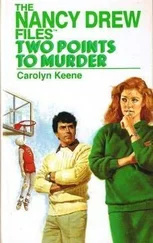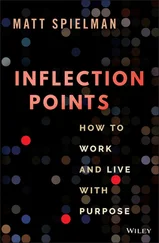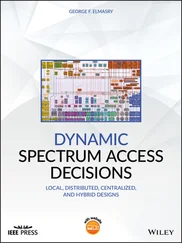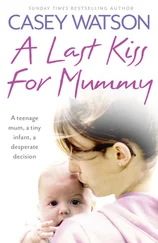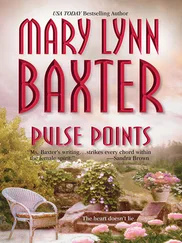Saddam Hussein didn’t just threaten his neighbors. He had invaded two of them, Iran in the 1980s and Kuwait in the 1990s.
Saddam Hussein didn’t just violate international demands. He had defied sixteen UN resolutions, dating back to the Gulf War.
Saddam Hussein didn’t just rule brutally. He and his henchmen had tortured innocent people, raped political opponents in front of their families, scalded dissidents with acid, and dumped tens of thousands of Iraqis into mass graves. In 2000, Saddam’s government decreed that people who criticized the president or his family would have their tongues slashed out. Later that year, an Iraqi obstetrician was beheaded on charges of prostitution. The woman’s true crime was speaking out about corruption in the Iraqi health ministry.
Saddam Hussein didn’t just pursue weapons of mass destruction. He had used them. He deployed mustard gas and nerve agents against the Iranians and massacred more than five thousand innocent civilians in a 1988 chemical attack on the Kurdish village of Halabja. Nobody knew what Saddam had done with his biological and chemical stockpiles, especially after he booted inspectors out of the country. But after reviewing the information, virtually every major intelligence agency in the world had reached the same conclusion: Saddam had WMD in his arsenal and the capacity to produce more. One intelligence report summarized the problem: “Since the end of inspections in 1998, Saddam has maintained the chemical weapons effort, energized the missile program, made a bigger investment in biological weapons, and has begun to try to move forward in the nuclear area.”
Before 9/11, Saddam was a problem America might have been able to manage. Through the lens of the post-9/11 world, my view changed. I had just witnessed the damage inflicted by nineteen fanatics armed with box cutters. I could only imagine the destruction possible if an enemy dictator passed his WMD to terrorists. With threats flowing into the Oval Office daily—many of them about chemical, biological, or nuclear weapons—that seemed like a frighteningly real possibility. The stakes were too high to trust the dictator’s word against the weight of the evidence and the consensus of the world. The lesson of 9/11 was that if we waited for a danger to fully materialize, we would have waited too long. I reached a decision: We would confront the threat from Iraq, one way or another.

My first choice was to use diplomacy. Unfortunately, our track record with Iraq was not encouraging. We maintained a bilateral relationship with Baghdad in the 1980s. We obtained UN Security Council resolutions in the 1990s. Despite our engagement, Saddam grew only more belligerent.
If diplomacy was going to succeed, we needed a fundamentally different approach. We believed Saddam’s weakness was that he loved power and would do anything to keep it. If we could convince him we were serious about removing his regime, there was a chance he would give up his WMD, end his support for terror, stop threatening his neighbors, and, over time, respect the human rights of his people. The odds of success were long. But given the alternative, it was worth the effort. The approach was called coercive diplomacy.
Coercive diplomacy with Iraq consisted of two tracks: One was to rally a coalition of nations to make clear that Saddam’s defiance of his international obligations was unacceptable. The other was to develop a credible military option that could be used if he failed to comply. These tracks would run parallel at first. As the military option grew more visible and more advanced, the tracks would converge. Our maximum leverage would come just before they intersected. That would be the moment of decision. And ultimately, it would be Saddam Hussein’s decision to make.

In February 2001, British Prime Minister Tony Blair and his wife, Cherie, came to visit Laura and me at Camp David. Tony was the first foreign leader we invited, a tribute to the special relationship between the United States and Great Britain.
I wasn’t sure what to expect from Tony. I knew he was a left-of-center Labour Party prime minister and a close friend of Bill Clinton’s. I quickly found he was candid, friendly, and engaging. There was no stuffiness about Tony and Cherie. After dinner, we decided to watch a movie. When they agreed on Meet the Parents , a comedy starring Robert De Niro and Ben Stiller, Laura and I knew the Bushes and Blairs would get along.

Laura and me with Cherie and Tony Blair. White House/Eric Draper
Tony and I talked through the major issues of the day. He gave me a briefing on the politics of Europe. We discussed our common goals to expand free trade, relieve suffering in Africa, and address the violence in the Holy Land. We didn’t spend much time on the social issues. That was left for Cherie and me.
In the summer of 2001, the Blairs invited Laura and me to Chequers, the storied country estate of the British prime minister. Chequers is a large, creaky house filled with rustic, comfortable furniture and portraits of former prime ministers. Rather than throw a formal reception, the Blairs arranged a cozy family dinner with their four children—including little Leo, age fourteen months.
About halfway through the meal, the death penalty came up. Cherie made clear she didn’t agree with my position. Tony looked a little uncomfortable. I listened to her views and then defended mine. I told her I believed the death penalty, when properly administered, could save lives by deterring crime. A talented lawyer whom I grew to respect, Cherie rebutted my arguments. At one point, Laura and I overheard Euan, the Blairs’ bright seventeen-year-old son, say, “Give the man a break, Mother.”
The more time we spent together, the more I respected Tony. Over the years, he grew into my closest partner and best friend on the world stage. He came to the United States for meetings more than thirty times during my presidency. Laura and I visited him in Northern Ireland, Scotland, and London. In November 2003, Tony and Cherie invited us to their home in Trimdon Colliery, an old mining area in the countryside. They served us a cup of tea in their redbrick Victorian and took us to a town pub, the Dun Cow Inn. We ate fish and chips with mushy peas, which I washed down with a nonalcoholic Bitburger lager. After lunch, we dropped by a local school and watched a soccer practice—known as football to our hosts. The people were decent and welcoming, aside from the protester who carried a sign that read “Mad Cowboy Disease.”
Tony had a quick laugh and a sharp wit. After our first meeting, a British reporter asked what we had in common. I quipped, “We both use Colgate toothpaste.” Tony fired back, “They’re going to wonder how you know that, George.” When he addressed a Joint Session of Congress in 2003, Tony brought up the War of 1812, when British troops burned the White House. “I know this is kind of late,” he said, “but … sorry.”
Unlike many politicians, Tony was a strategic thinker who could see beyond the immediate horizon. As I would come to learn, he and I were kindred spirits in our faith in the transformative power of liberty. In the final week of my presidency, I was proud to make him one of the few foreign leaders to receive the Presidential Medal of Freedom.**
Above all, Tony Blair had courage. No issue demonstrated it more clearly than Iraq. Like me, Tony considered Saddam a threat the world could not tolerate after 9/11. The British were targets of the extremists. They had extensive intelligence on Saddam. And they understood in a personal way the menace he posed. Saddam was shooting at their pilots, too.
Читать дальше






